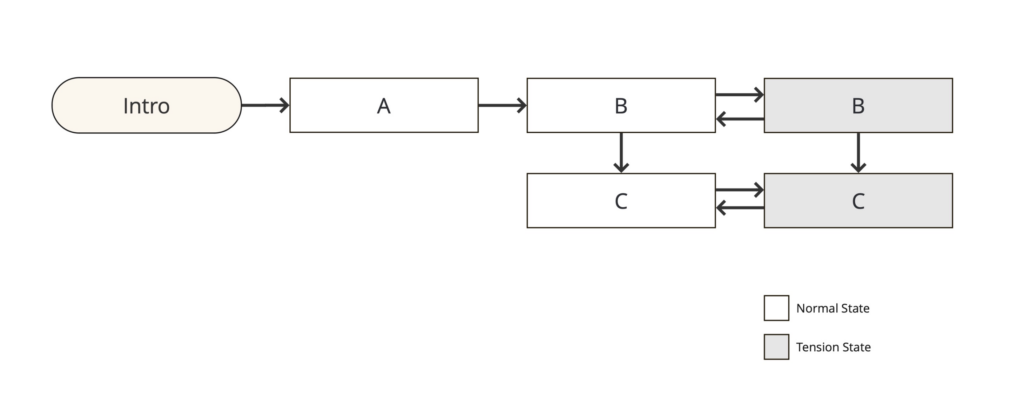Digitales Marketing ist in der heutigen Zeit ein unverzichtbares Werkzeug für Unternehmen, um ihre Zielgruppe zu erreichen. Es ermöglicht Unternehmen, eine starke Online-Präsenz aufzubauen und mit ihren Kund:innen in direkten Kontakt zu treten. Die Entwicklung von digitalem Marketing reicht bis in die 1990er Jahre zurück, als das Internet für Werbung und Kundenkommunikation genutzt wurde. Ab den 2000er Jahren, mit dem Aufkommen mobiler Technologien und sozialer Netzwerke, veränderte sich das digitale Marketing von einer einseitigen Werbung zu einer interaktiven Kommunikation.
Im digitalen Marketing werden digitale Werkzeuge und Technologien zur Unterstützung des Marketingprozesses eingesetzt. Ziel ist es, die Interaktion und das Engagement der Kund:innen zu fördern. Zu den relevanten digitalen Technologien gehören verschiedene Internetanwendungen wie Suchmaschinenmarketing und soziale Medien, aber auch Kundendatenbanken, Augmented Reality, Virtual Reality, Big Data, künstliche Intelligenz, Blockchain und psychodiagnostische Technologien. Vier zentrale Techniken prägen das digitale Marketing: soziale Medien, mobile Technologien, Datenanalyse sowie der elektronische Handel. Diese Elemente spielen eine wichtige Rolle bei der Entwicklung einer Strategie für digitale Marketingmaßnahmen.
Unterschiede zwischen digitalem und traditionellem Marketing
Obwohl das digitale Marketing viele Vorteile bietet, ersetzt es das traditionelle Marketing nicht. Ein bedeutender Unterschied zwischen digitalem und traditionellem Marketing liegt in der Reichweite. Während traditionelles Marketing in erster Linie eine lokale Zielgruppe anspricht, ermöglicht digitales Marketing globale Maßnahmen. Außerdem unterscheidet sich die Interaktivität der beiden Ansätze. Traditionelle Marketingkanäle bieten nur begrenzte Möglichkeiten zur direkten Kommunikation mit Kund:innen, während digitale Marketingstrategien eine unmittelbare Interaktion fördern und die Kundenbindung stärken.
Ein weiterer Unterschied liegt in der Messbarkeit. Digitale Marketingmaßnahmen lassen sich präzise analysieren und laufend optimieren. Im traditionellen Marketing ist der Erfolg einer Kampagne schwer zu beurteilen. Traditionelle Werbemaßnahmen können nach ihrer Veröffentlichung kaum verändert werden, digitale Kampagnen können aber laufend angepasst und optimiert werden.
Digitale Marketing-Management-Modelle
Zwei der bekanntesten Modelle, die Unternehmen bei der Planung und Umsetzung ihrer digitalen Marketingstrategien verwenden können, sind das SOSTAC-Modell und das RACE-Modell.
SOSTAC-Modell
Das SOSTAC-Modell ist eine Struktur, die unterstützend zur Planung und Umsetzung digitaler Marketingstrategien verwendet werden kann. Der Name setzt sich aus den sechs Phasen Situation Analysis, Objectives, Strategy, Tactics, Action und Control zusammen.
Zu Beginn wird die Situationsanalyse durchgeführt, bei der die aktuelle Unternehmenslage untersucht wird. Dazu gehört die Leistungsbewertung des Unternehmens, die Analyse von Kund:innen Insights sowie die SWOT-Analyse.
Im nächsten Schritt werden die Ziele definiert. Unternehmen legen fest, welche Ergebnisse sie mit ihren digitalen Marketingmaßnahmen erreichen möchten.
In der nächsten Phase wird die Strategie festgelegt, also mit welchen Maßnahmen die definierten Ziele erreicht werden können. Dazu gehört die Entwicklung eines Online-Wertversprechens, die Positionierung im digitalen Markt und die Auswahl der passenden digitalen Kanäle.
Anschließend wird die Taktik festgelegt. Diese Phase beinhaltet die detaillierte Planung der Maßnahmen, der digitale Marketing-Mix und der Kommunikationsmix werden überprüft.
Daraufhin folgt die Umsetzung der Maßnahmen in der Action-Phase. Hierbei werden die Aufgaben, Verantwortlichkeiten und Ressourcen definiert, um die geplante Strategie in die Praxis umzusetzen.
Abschließend erfolgt die Kontrolle der umgesetzten Maßnahmen, hier wird festgestellt, ob die Ziele erreicht wurden. Dies geschieht unter anderem durch die Analyse von Web-Traffic und die Auswertung von Kundenfeedback.
RACE-Modell
Das RACE-Modell umfasst fünf Schritte zur Steuerung digitaler Marketingstrategien.
Der erste Schritt ist die Planungsphase, in der unter anderem die Costumer Research, die Positionierung und die Entwicklung eines Werteversprechens erfolgen.
Anschließend folgt die Reichweitensteigerung, hierbei ist das Ziel, die Markenbekanntheit zu erhöhen und den Website-Traffic zu steigern. Umgesetzt wird dies mittels Social Meda und Suchmaschinenwerbung.
In der nächsten Phase, Act, sollen potenzielle Kunden dazu ermutigt werden, sich intensiver mit dem Unternehmen oder den Produkten auseinanderzusetzen, beispielsweise durch Interaktionen mit Landing Pages.
Darauf aufbauend folgt die Phase Convert, in der Interessent:innen zu zahlenden Kund:innen werden sollen.
Abschließend zielt die Engage-Phase darauf ab, langfristige Kundenbeziehungen aufzubauen und die Kundenbindung zu stärken. Ziel ist es, bestehende Kund:innen als Markenbotschafter:innen zu gewinnen, sodass sie das Unternehmen aktiv weiterempfehlen.
Aghazadeh, Hashem / Khoshnevis, Mozhde: Digital Marketing Technologies. Singapur: Springer Nature 2024, S. 3 – 10, S. 22 – 27
Chaffey, Dave/Ellis-Chadwick, Fiona: Digital Marketing. Strategy, Implementation and Practice. Harlow: Pearson International Content 2019
